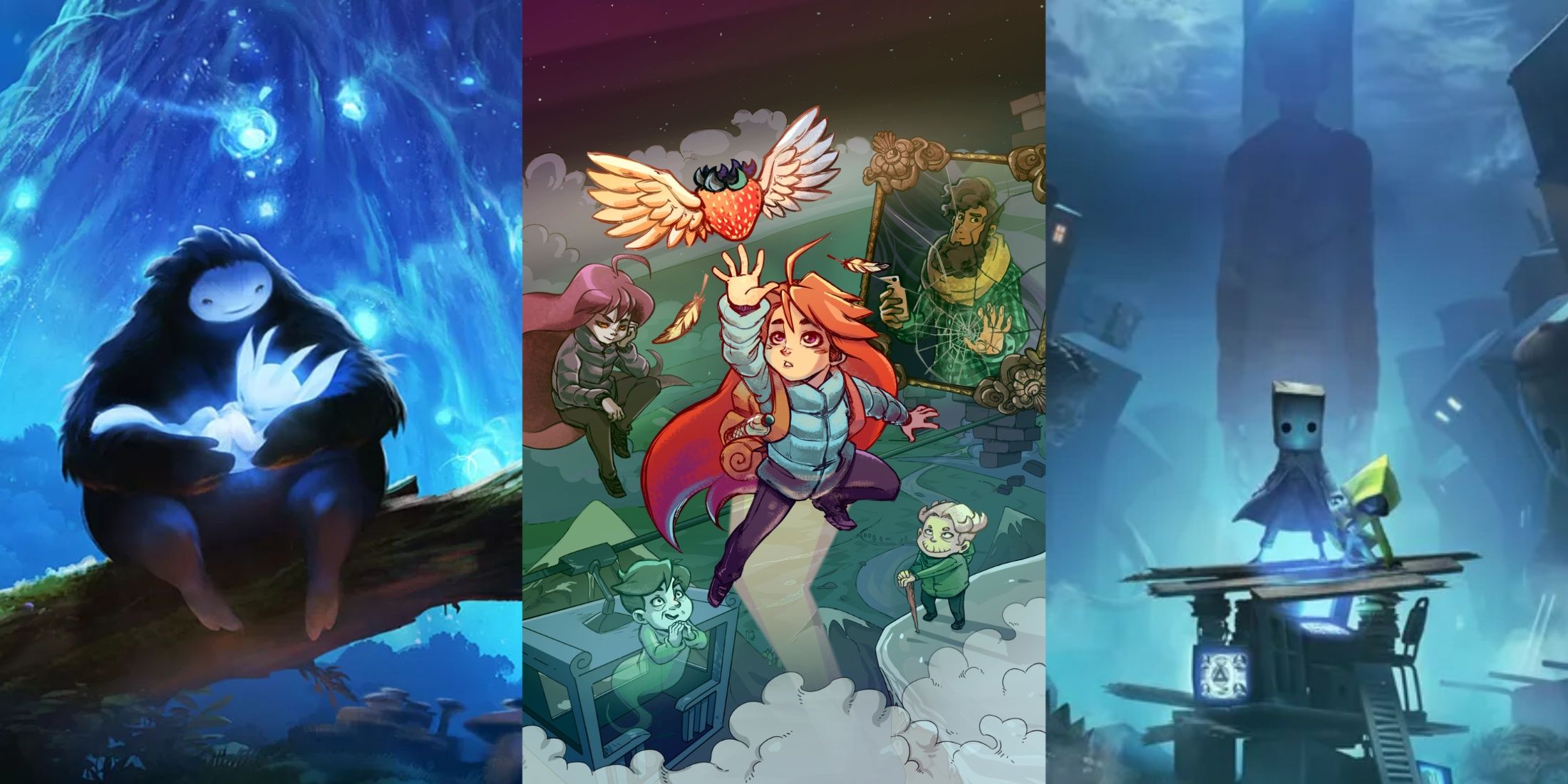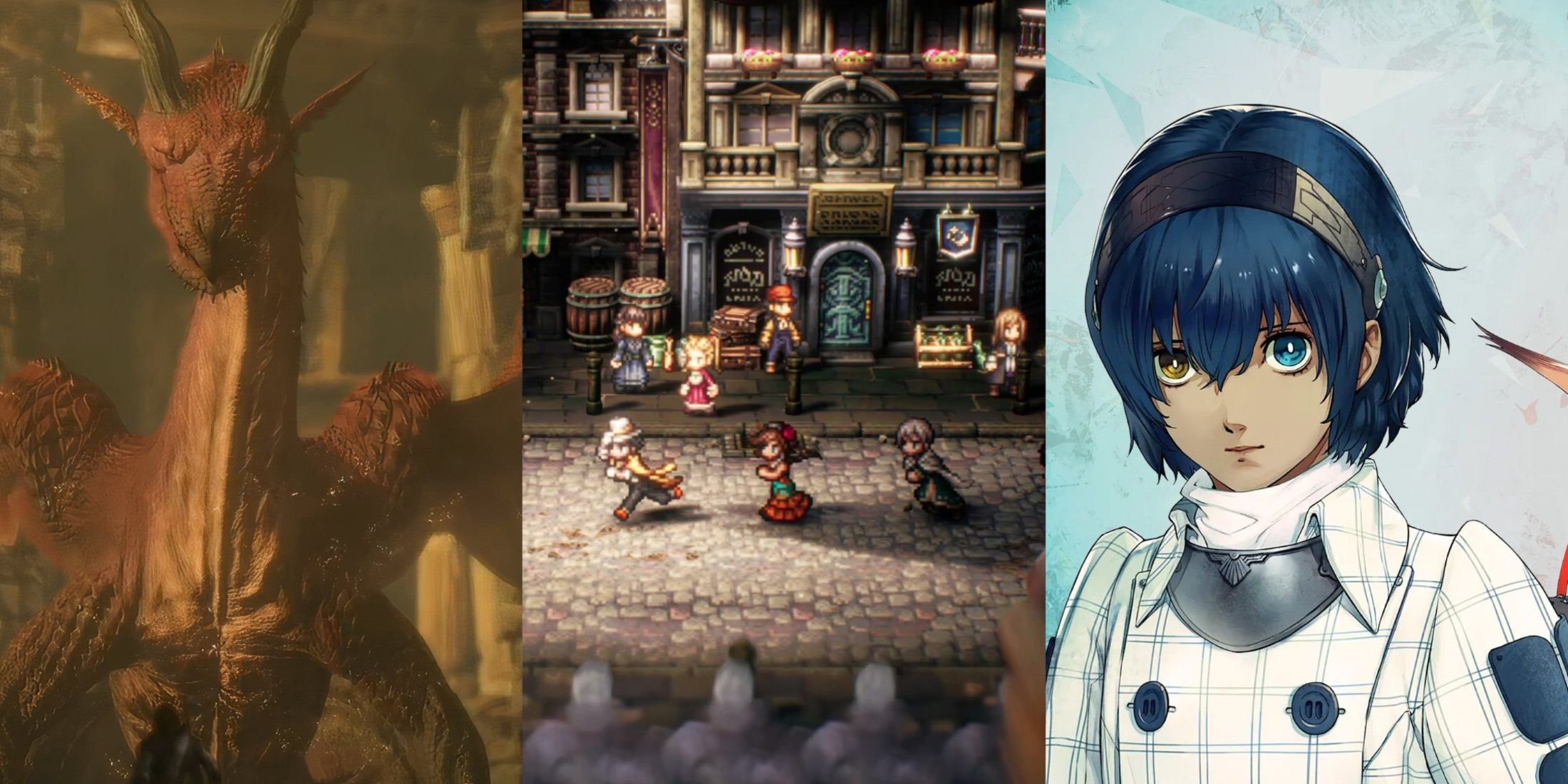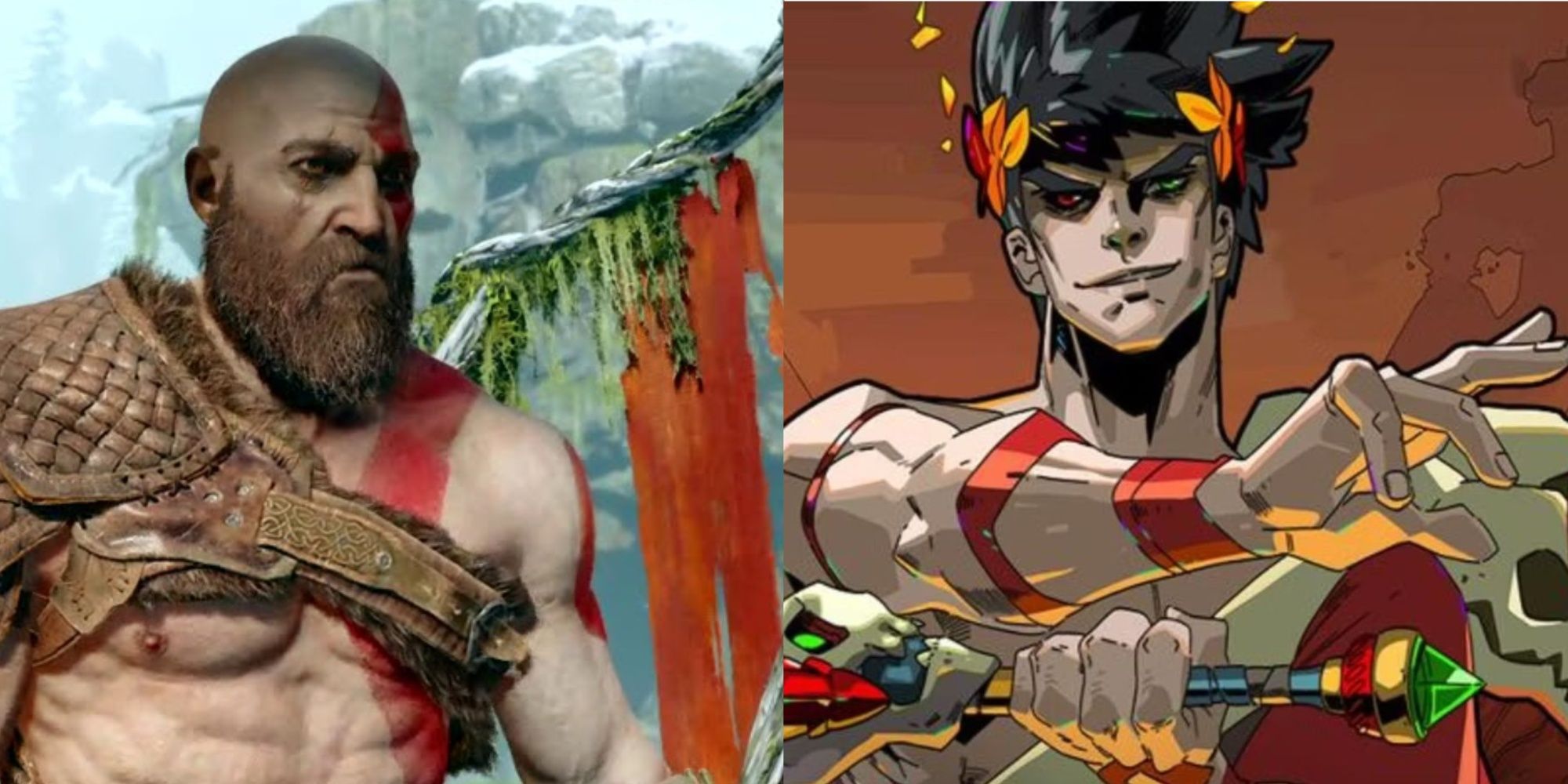Summary
- Heroes can be secret villains due to manipulative narratives in video games like BioShock Infinite.
- Moral ambiguity is prevalent in characters like Edelgard from Fire Emblem: Three Houses.
- Protagonists like Tim from Braid may be villains, as seen in the game’s subversive storyline.
There are a lot of ways in which a hero can be the secret villain all along. Sometimes, the narrative is manipulated in such a way that the morality is centered around the protagonist, regardless of their actions and the implications that they may have. Other times, the hero is simply misled into following an evil cause.

Related
Mario Kart 9: 10 Mario Characters Who Should Be In The Next Game
With some old, some new, and some not yet in view these various characters from the greater series should be playable in the new Mario Kart.
Whatever the case, it is clear that, especially in narrative-driven video games, things are not always as they seem. Whether defined as a hero or villain, there is certainly more than meets the eye about these characters than players might initially perceive. Not every hero is necessarily a protagonist, but each is a major character who conceals their evil.
Spoilers Ahead For Every Game Listed
8
Booker DeWitt
A Detective In Debt
BioShock Infinite takes place in 1912, in an alternate reality where a state known as Columbia, originally funded by the United States, secedes to create a fascistic police state. It features “tears” in the fabric of space-time, frequently used to explore alternate realities. The protagonist of Infinite is Booker DeWitt, a detective ordered to capture and turn in a woman named Elizabeth, who is able to open tears, to pay off his debts. It is revealed later that DeWitt sold Elizabeth to Columbia’s founder, Zachary Comstock, to pay off a previous series of debts, and that she is actually his biological daughter, Anna DeWitt.
Even more fascinatingly, the very existence of Comstock is connected to a sin in Booker’s past. DeWitt is of partial Native American ancestry, a fact that led him to be met with prejudice during his time as a soldier. To overcome such issues, Booker massacred many other natives and felt guilt for his actions, despite being viewed as a hero by his regiment. He planned to attend a baptism to be forgiven for his actions, but relented, believing it did not constitute a proper forgiveness.
However, other versions of Booker in other realities that did accept the baptism were reborn and rechristened as Zachary Hale Comstock, becoming involved in both devout Christianity and politics, and eventually becoming the despot ruler of Columbia. Elizabeths from various realities cross timelines and drown the corresponding Bookers before they can “be reborn,” and eventually, Comstock’s very existence is erased. Because Elizabeth herself stems from Booker’s actions after he makes his choice at the baptism, most of them disappear alongside their counterparts.
7
Codex
A Bookish Bird
Bookworm Adventures
- Released
-
November 28, 2006
Bookworm Adventures has its titular Bookworm, Lex, using his words to wipe out a variety of characters from various tales in order to save Cassandra, the Oracle of Delphi. He is mentored by a bird of an unclear species known as Codex, who is the head librarian at the library where the books Lex visits are stored. One of Lex’s final foes, Dracula, tells the worm Codex is not to be trusted, and offers to side with Lex. Lex completely disregards him and reunites with the professor. This is when Codex reveals that he never wanted Cassandra to be saved and has instead taken to using the power of various figures Lex has defeated during his travels to create an army of loyal servants.
After summoning the likes of Cerberus, Medusa, Shaitan, and the Wolf Man to fight the Bookworm, Lex defeats them all and takes on Codex himself, finishing him off by typing the word, “sesquipedalian,” a word used to describe words that are long or have many syllables, which he identifies as being autological, or self-descriptive.
6
Wander
Killer Of The Colossus
In Shadow of the Colossus, Wander is a man who wants nothing more than to revive a woman named Mono. To achieve this ambition, he makes a deal with an entity that calls itself Dormin to kill sixteen wandering beings known as colossi, which serve as living incarnations of the statues sealing him away. Wander kills every single one and is met shortly after by a shaman known as Lord Emon and his knights.
This is when the fragments of the now-freed Dormin possess Wander and transform him into a giant beast. Emon casts a spell on the ancient sword, the weapon with which Wander killed the colossi, and attempts to purge the evil spirit from him. Wander is reborn as a baby, but he still possesses a pair of horns. This baby is recovered by Mono, and it is unclear exactly how much of Dormin’s influence remains in him.
5
Tim
A Twisted Time-Traveler
2008’s Braid is the first indie game directed by Jonathan Blow, known for its subversive narrative and nonlinear deconstruction of the platformer genre, drawing heavily from classics such as Super Mario Bros. Its protagonist, Tim, is able to manipulate the flow of time in various ways, with each level revolving around a different time-related mechanic which Tim must learn to utilize. Braid makes its final world the chronologically first, being labeled 1. This is appropriate, as it documents a past event explained during the story where a princess was kidnapped by a “monster” and Tim was left hoping to reconcile with her.
In the final chapter, an intimidating muscular knight is seen carrying the princess as she leaves Tim’s grasp and begs for help. Having lost her, he sets off a fiery wall to take her out. Tim and the princess aid each other in escaping the wall by removing various traps and unlocking gates, but as the end of the level is reached, it is shown in reverse, aka. the proper flow of time. This recontextualizes the entire event. Tim had previously kidnapped the princess, and she made active efforts to trap and contain him to secure her own escape. She was eventually rescued by the knight, who held onto her and climbed upward away from Tim. Tim was the monster all along.

Related
These incredible 2D platformers are must-plays for anyone eager for challenging and immersive experiences on the PlayStation 5.
A series of texts is shown, with the overarching themes of not getting hung up on the unattainable and the consequences of ignoring the perspectives of others, particularly women. This reflects how Tim is a hero in his own mind, but a villain in his actions. He is perhaps one of the greatest, albeit worst-kept-secret twist villains in gaming, thanks to Braid being so widely recognized. In the alternate ending where Tim is able to physically interact with the princess, she explodes and kills every living being in the level, save for Tim himself.
4
Sirius
Bomberman’s Benefactor
Bomberman 64
- Released
-
September 26, 1997
In Bomberman 64, a group of space pirates known as Altair, Regulus, Orion, and Artemis steal a device called the Omni Cube, which they use to wreak havoc on the galaxy, including Planet Bomber. Sirius meets with the White Bomberman and mentions his desire to get revenge on Altair for killing his family and destroying his planet. With his guiding hand, Bomberman is able to kill Artemis and Orion, as well as defeat Regulus. Yet along the way, Sirius’ mannerisms imply a more sinister tone. In a notable bit of dialogue, Sirius clarifies that Altair’s destruction is relatively minor due to his inexperience with the Omni Cube.
The next path is decided by whether the player collects 100 gold cards before challenging Altair. If the cards are not collected, he is rescued by Regulus and survives, disappointing Sirius and resulting in the resumed attack on Planet Bomber. If a sufficient number of cards is gathered and Altair is defeated, Sirius reveals his hand and uses the power of the Omni Cube to kill Altair himself. He tells Bomberman he lied about his motivations and returns to his own domain, known as Rainbow Palace, where Bomberman confronts him. Regulus arrives later to neutralize the Omni Cube, and Sirius is ultimately destroyed by their combined efforts.
3
Edelgard Von Hresvelg
An Anti-Hero And Anti-Theist
Edelgard is one of three potential deuteragonists in Fire Emblem: Three Houses. She is the head of the Black Eagles house at the Officer’s Academy and the heir apparent of the Adrestian Empire. She is strongly opposed to the Crest system, where those of special bloodlines are arbitrarily given blessings by Seiros. This is partially, but not entirely, hereditary. This hatred is largely because she and her siblings were all held hostage by nobles and forcibly had the Crest of Flames imprinted onto them. Edelgard was the only survivor of this event, and she suffered discolored hair and a shortened lifespan as a result. She also identified that Crest essentialism causes noble families to reject even their talented children if they lack it. This is what happened to Miklan Gautier, who bullied his younger brother, Sylvain, out of jealousy and later became a bandit leader.
To overthrow the Church of Seiros, which ran the school and upheld the system, Edelgard cut a deal with Those Who Slither in the Dark—an organization much more directly responsible for her suffering—who are also opposed to Seiros. To conduct anti-Seiros operations undetected, she disguised herself as the Flame Emperor. However, before the game’s time jump, Edelgard’s identity is exposed to her classmates, and she is forced to flee the Officer’s Academy. How much of a direct antagonist Edelgard actually is for the remainder of the story is decided by the path the player takes. The significance of her role as antagonist in each arc is tied to her stepbrother, Dimitri Blaidydd, who is less apprehensive toward the Crest system, and ultimately feels betrayed to the point of extreme anger by her efforts to undermine the church.

Related
8 JRPGs With The Best Class Systems, Ranked
Class systems are central to many JRPGs, and these titles did the best at creating ones that feel satisfying to play.
Ultimately, Edelgard’s villainy is more pragmatic than anything, but her frequent role as an antagonist and the extreme methods she uses—even when she’s aligned with the player—allows her to be classified as a villain, even if she is attempting to overturn an unjust status quo.
2
Revan
Secretly Sith
- Released
-
July 15, 2003
- OpenCritic Rating
-
Mighty
Revan is introduced as a Jedi shaped from an identity determined by the player, which makes aspects such as their gender customizable. However, there are concrete facts about the character regardless of their player-assigned identity. One is that they were a Sith Lord who was formerly a Jedi, known as Darth Revan. Alongside their fellow defector, Darth Malak, they defeat the Jedi who are attempting to capture Revan.
However, Malak betrays his comrade, resulting Revan being badly injured and recovered by the Jedi, who decide to wipe their memory and re-integrate them into their order, and this is the character who players control from the game’s outset. From here, Revan gradually regains their memories, eventually recalling their past as a Sith, and can then decide whether to dedicate themselves to the Jedi, or turn to the Sith once again. However, various media indicate that, in certain canons, Revan remained on the light side after regaining his memories.
1
Sissel
A Sunken Spirit
- Released
-
June 19, 2010
- OpenCritic Rating
-
Mighty
With heavy involvement from the creator of the Ace Attorney series, Ghost Trick has gained some popularity off the back of its counterpart’s significant success. Rather than a mere visual novel, this game is more puzzle-driven, where the player controls an amnesiac spirit, traveling through time to solve murders by manipulating various items in a way that the outcome plays out differently and saves the victim’s life.
Sissel, the spirit in question, is tasked by another spirit named Ray, with saving the life of Lynne, a detective who is repeatedly targeted by foreign agents. As Sissel saves the lives of Lynne and various other potential victims, he steadily begins to learn more about his past identity, especially when it is revealed that Lynne was apparently responsible for killing him.
As the story progresses, he is revealed to be a ruthless man, responsible for killing the wife of a falsely imprisoned detective, Jowd, and largely responsible for setting off the events of the game. Sissel later encounters his old body, possessed by a spirit known as Yomiel, who can manipulate people.
In a fascinating twist, it is merely the perceived body of the protagonist with a villainous history, as Sissel himself was simply a cat who Yomiel took care of for some time. However, even Yomiel’s villainy is undone in this recreated world. Rather than going on a villainous tirade, Yomiel is instead incarcerated for his retroactively attempted and then retconned crimes. He is released a decade later in good spirits.

More
5 Best Games Starring Demigods, Ranked
These excellent video games allow players to take control of demigods as they explore (and sometimes conquer) their own diverse pantheons.






















